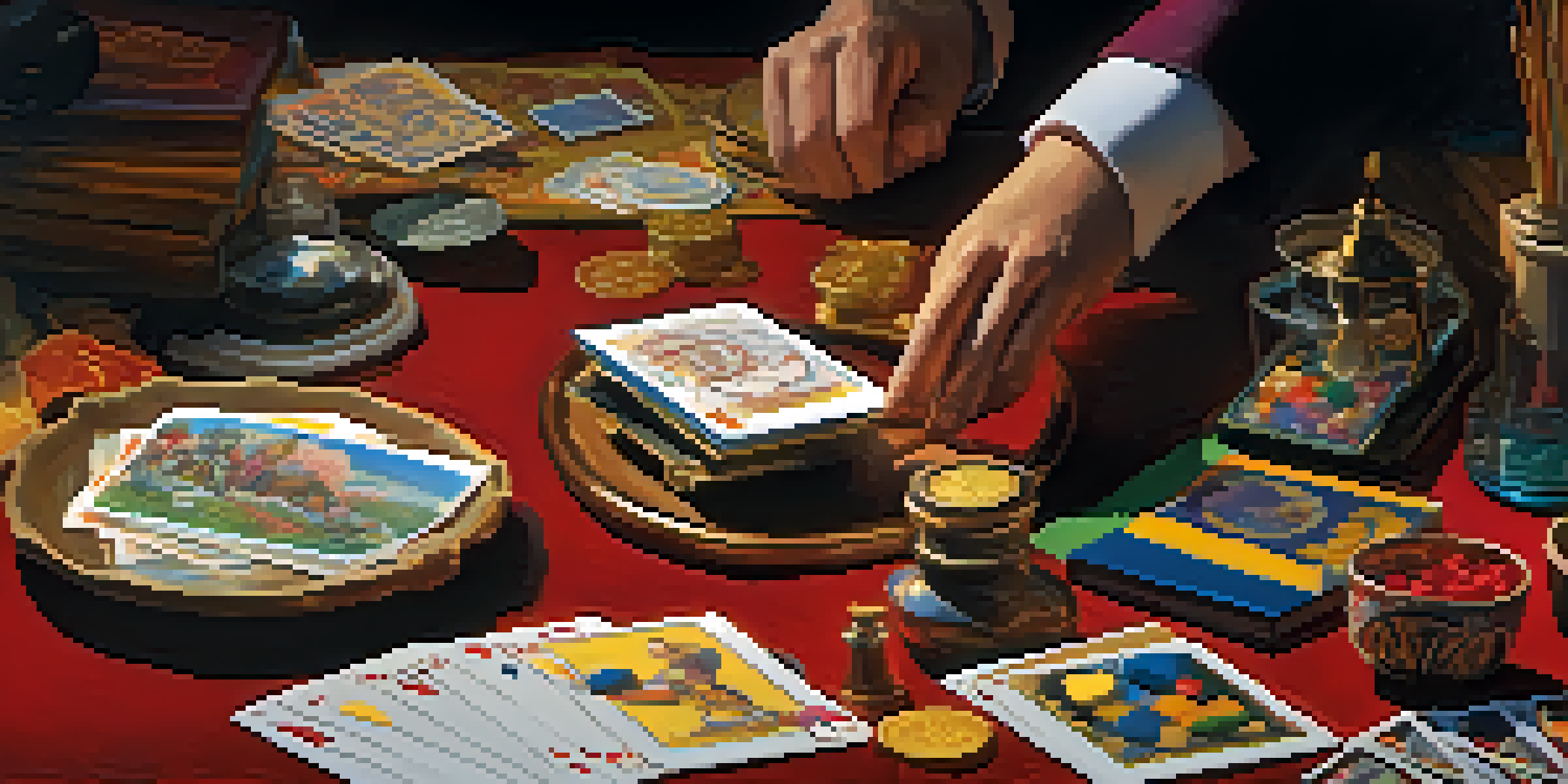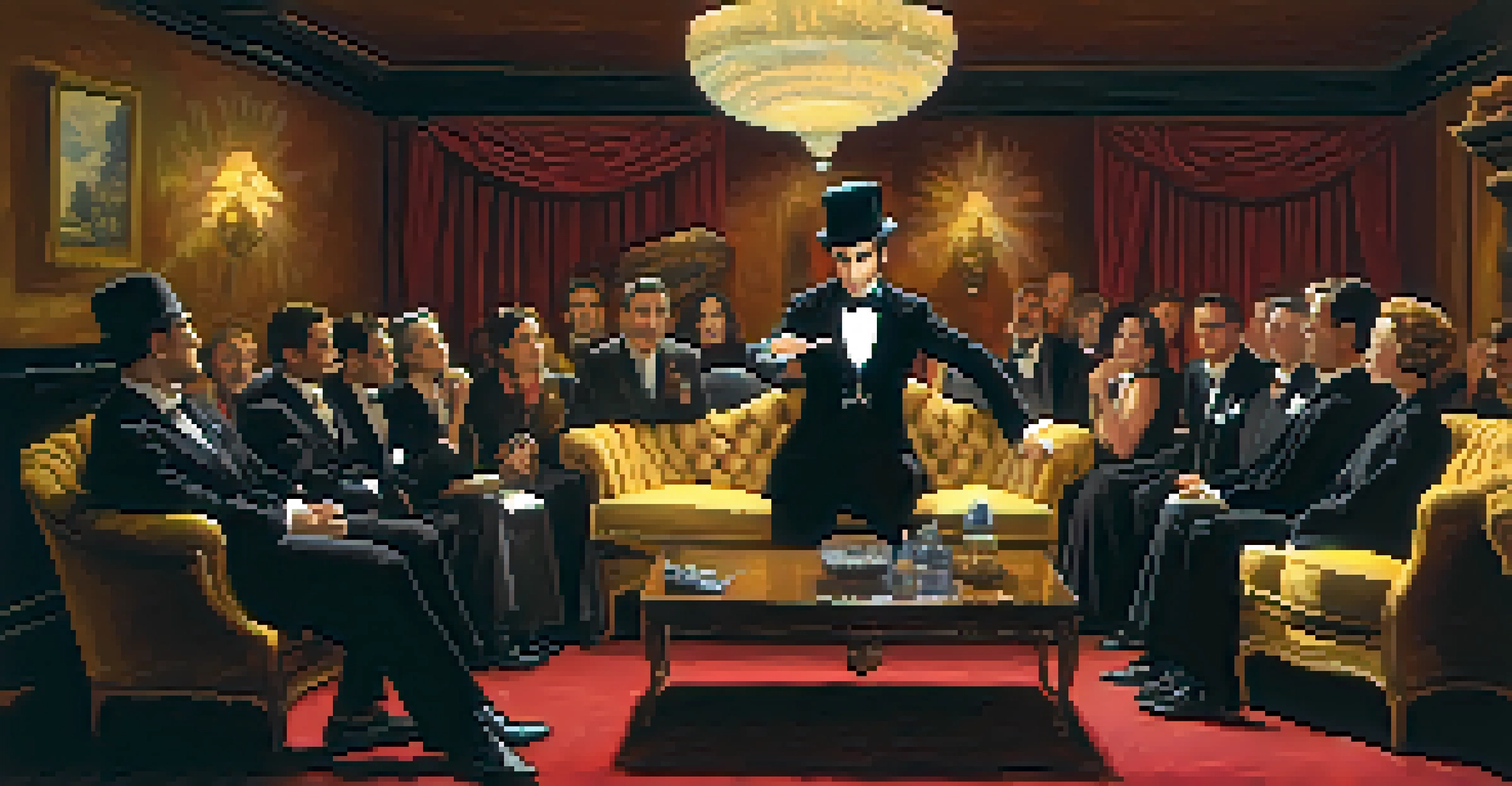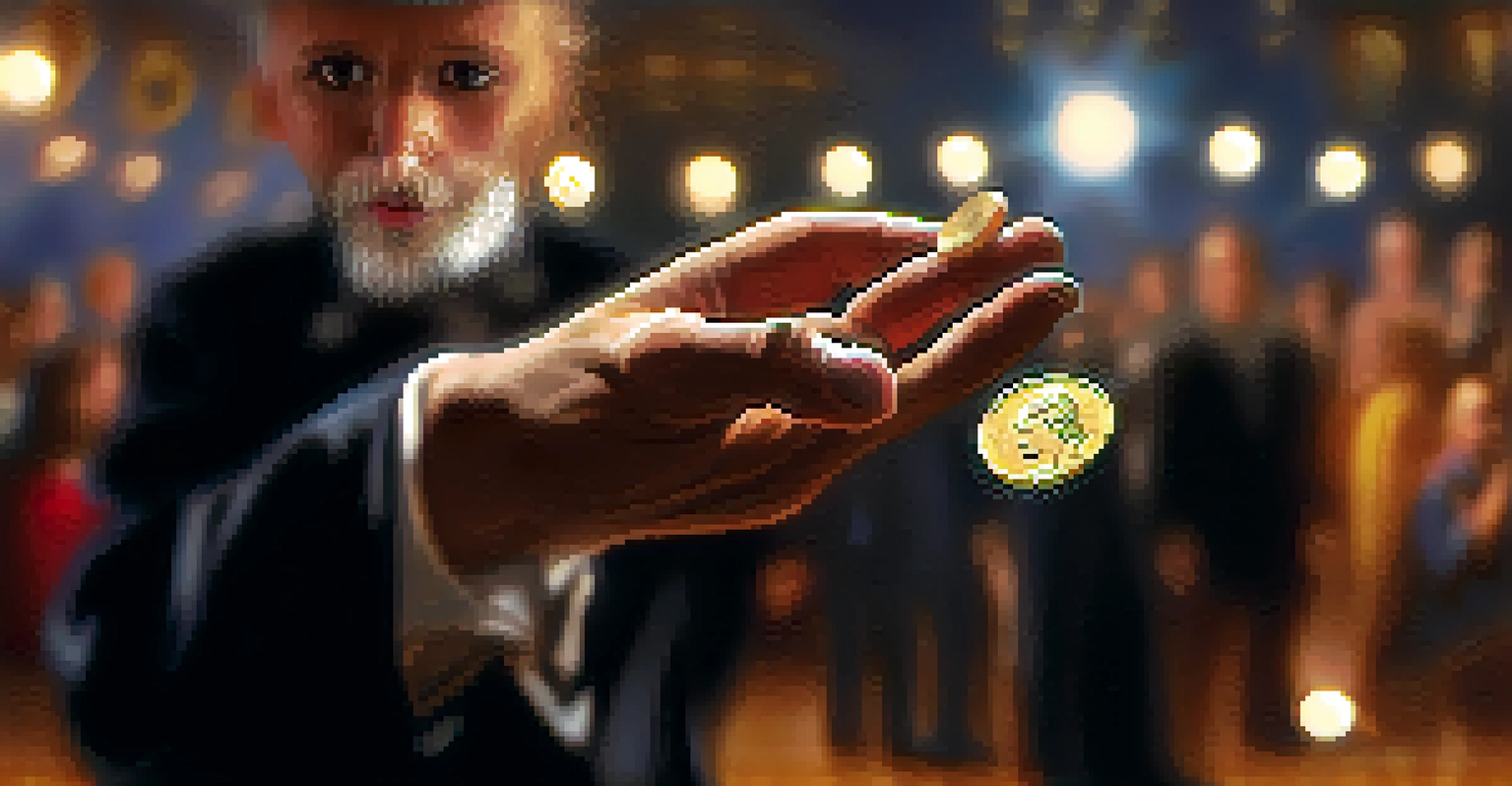Crafting Your Own Magic Tricks: DIY Techniques for Beginners

Understanding the Basics of Magic Tricks
Before diving into crafting your own magic tricks, it's essential to grasp the fundamentals of magic. Magic relies on illusion, misdirection, and the element of surprise. Understanding these principles will help you create tricks that captivate your audience.
Magic is the art of making the impossible possible.
For instance, think of how a magician might use a simple card trick to lead the audience's attention away from the real secret. By mastering these basics, you set a solid foundation for your own magical creations.
Remember, magic is not just about the trick itself; it’s about the performance. You want to engage your audience, making them feel the wonder and excitement of your illusions.
Gathering Your Magic Supplies
Creating your own magic tricks doesn't require an expensive toolkit. Many effective tricks can be performed using everyday items found around your home. Think about using cards, coins, or even paper and string to craft your illusions.

For example, a simple coin vanish can be performed with just a coin and a bit of practice. The key is to be resourceful and innovative, transforming ordinary objects into instruments of wonder.
Understand Magic Fundamentals
Grasping the basics of illusion and misdirection is essential for creating captivating magic tricks.
As you gather your supplies, consider what materials you feel comfortable working with. This will help you tailor your tricks to your strengths and interests.
Start with Simple Card Tricks
Card tricks are a fantastic starting point for beginners. They are versatile, easy to learn, and can be performed in almost any setting. A basic trick, like the 'pick a card' routine, can impress your friends with practice.
The real secret of magic lies in the performance.
The beauty of card tricks lies in their simplicity and the opportunity for creativity. Once you master a basic trick, you can add your flair or combine it with other techniques to make it unique.
So, take some time to familiarize yourself with a deck of cards, experiment with shuffling techniques, and practice various tricks until you find a few that resonate with you.
Mastering the Art of Misdirection
Misdirection is a magician's best friend. It's all about guiding your audience's attention away from the method behind the trick. This can involve clever storytelling or engaging gestures that draw the eye.
For example, while performing a coin trick, you might focus your audience's attention on your other hand, creating an illusion of movement. This technique can elevate even the simplest tricks into something truly magical.
Utilize Everyday Items
Many effective magic tricks can be performed using simple, everyday objects found around your home.
Practice your misdirection techniques alongside your tricks. The more natural and fluid you become, the more effective your illusions will be.
Creating Visual Illusions with Everyday Objects
Everyday objects can be transformed into magical tools with a little creativity. Using items like cups, scarves, or even your phone, you can create visual illusions that leave your audience guessing. For instance, using a scarf to make it appear as if it's vanishing can be both simple and mesmerizing.
Think about how to manipulate these objects in a way that enhances the illusion. The more engaging your props, the more captivating your performance will be.
Experiment with different items and techniques to discover what works best for you. This exploration will not only help you find your style but also spark your imagination.
Incorporating Storytelling into Your Performance
A great magic performance is more than just executing tricks; it tells a story. By weaving a narrative into your act, you create an emotional connection with your audience. This can be as simple as giving your trick a theme or creating a backstory for your character.
For example, you could frame your card trick as a quest to find a lost treasure, adding excitement and intrigue. This narrative element helps to keep your audience engaged and invested in the performance.
Practice and Storytelling Matter
Consistent practice and incorporating storytelling into your performance enhance engagement and memorability.
As you practice, think about how you can incorporate storytelling into your magic. The more you connect with your audience, the more memorable your tricks will be.
Practicing Your Tricks: The Key to Success
Practice is the backbone of any successful magic performance. The more you rehearse your tricks, the more confident and polished your execution will become. Start by practicing in front of a mirror to refine your movements and ensure your misdirection is effective.
Consider recording your practice sessions to analyze your performance and identify areas for improvement. This feedback loop can help you enhance your skills and boost your confidence.

Remember, even the greatest magicians started as beginners. With dedication and practice, you'll soon master your own magical creations.